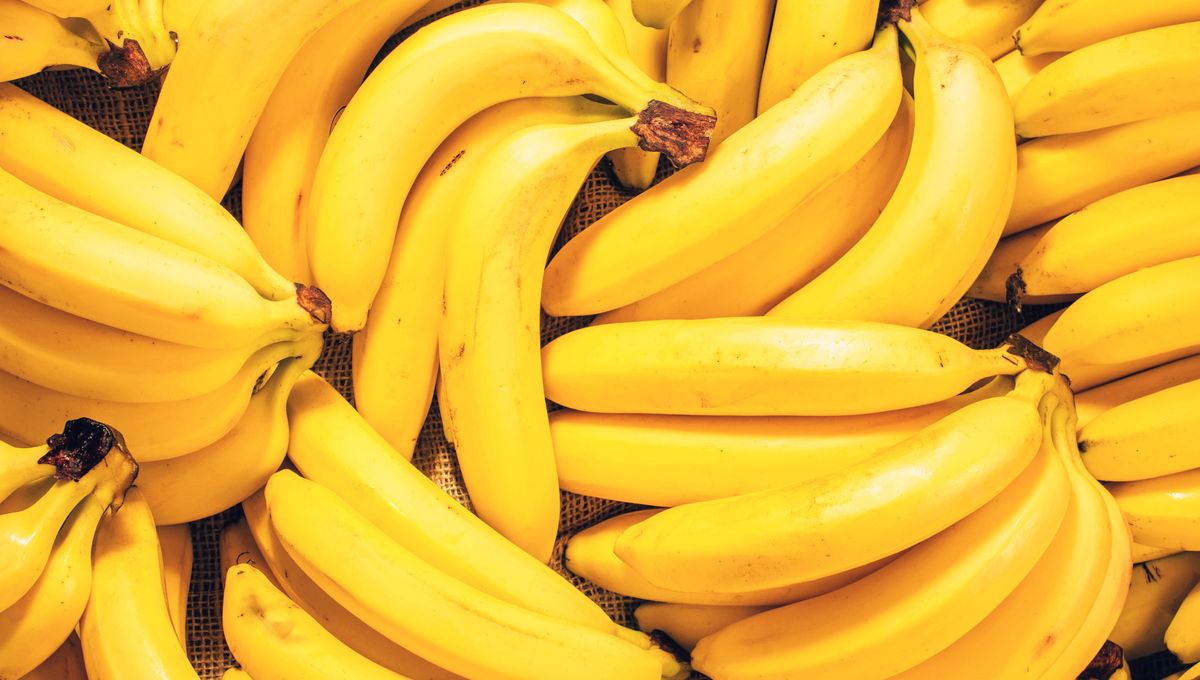
You may have seen in the news recently that a banana apocalypse is nigh – scientists have heralded an uncertain future for the fruit as it continues to be plagued by a fungal pathogen. It sounds like devastating news for lovers of banoffee pie and banana bread (although maybe not for smoothie fans) – are things really as dark as they seem?
What is the bananapocalypse?
It is sadly true that the bananas gracing our grocery stores and fruit bowls are facing functional extinction at the hands of a fungus called Fusarium oxysporum f.sp. cubense (Foc) tropical race 4 (TR4). This not-so-catchily-named pathogen causes the disease Fusarium wilt of banana (FWB), which is one of the most damaging plant diseases we know of.
FWB, also known as Panama disease, occurs when the fungus enters the plant through the roots, occupies its vascular system, and blocks the flow of water and nutrients to the fruit. This causes the plant to wilt, and eventually die.
This isn’t the first Fusarium outbreak that has threatened our bananas.
“The kind of banana we eat today is not the same as the one your grandparents ate. Those old ones, the Gros Michel bananas, are functionally extinct, victims of the first Fusarium outbreak in the 1950s,” explained Li-Jun Ma, a professor of biochemistry and molecular biology at the University of Massachusetts Amherst and senior author of a recent study on Foc TR4, in a statement.
Millions of Gros Michel banana plants in Central America were destroyed during the first half of the 20th century by a type of Fusarium known as Foc race 1 (R1). These were then replaced by an R1-resistant variety, the Cavendish banana. However, at the turn of the 21st century, a resurgence of FWB caused by a different strain, Foc tropical race 4 (TR4), began to threaten the banana industry once again.
TR4 is suspected to have originated in Indonesia and Malaysia, but has since spread far and wide, including to Columbia (in 2019) and Peru (in 2021), which are in the largest Cavendish banana-exporting region in the world.
The pathogen also infects locally consumed banana varieties, which are among the main dietary sources of carbohydrates in Africa, Southeast Asia, and tropical America.
“The TR4 invasion thus presents a major threat both to the global banana trade and to the food security of people living in these areas, with the potential to exacerbate poverty in developing nations and create food shortages that will intensify world hunger,” reads the paper.
Is this the end of the banana as we know it?
It certainly sounds like the end times for the Cavendish banana, but Ma and co-authors’ research has offered some hope for the flailing fruit. It turns out, Foc TR4 is evolutionarily distinct from the fungus that killed off bananas in the 50s, and they’ve even managed to pinpoint some genes associated with its virulence. All of which opens the door to potential treatments and strategies to temper its spread.
“We have spent the last 10 years studying this new outbreak of banana wilt,” said Ma. “We now know that the Cavendish banana-destroying pathogen TR4 did not evolve from the race that decimated the Gros Michel bananas. TR4’s genome contains some accessory genes that are linked to the production of nitric oxide, which seems to be the key factor in TR4’s virulence.”
Nitric oxide is harmful to the Cavendish banana: “This sudden burst of toxic gases facilitates infection by disarming the plant’s defense system. At the same time, the fungus protects itself by increasing production of chemicals that detoxify nitric oxide,” Ma writes in an article in The Conversation describing her research.
Knowing this provides researchers with many options to investigate how we can mitigate, or even control, the spread of Foc TR4. For example, Ma’s team was able to ascertain that the virulence of the fungus is greatly reduced when two genes that control nitric oxide production are eliminated.
Moving away from monocultures will also help safeguard our beloved breakfast food.
“Growing different varieties of bananas can make agriculture more sustainable and reduce disease pressure on a single crop. Farmers and researchers can control Fusarium wilt of banana by identifying or developing banana varieties that are tolerant or resistant to TR4,” Ma writes.
It seems there’s hope for the humble banana yet.
The study is published in Nature Microbiology.
Source Link: What The Heck Is The Bananapocalypse? Are We Facing A Banana-Free Future?